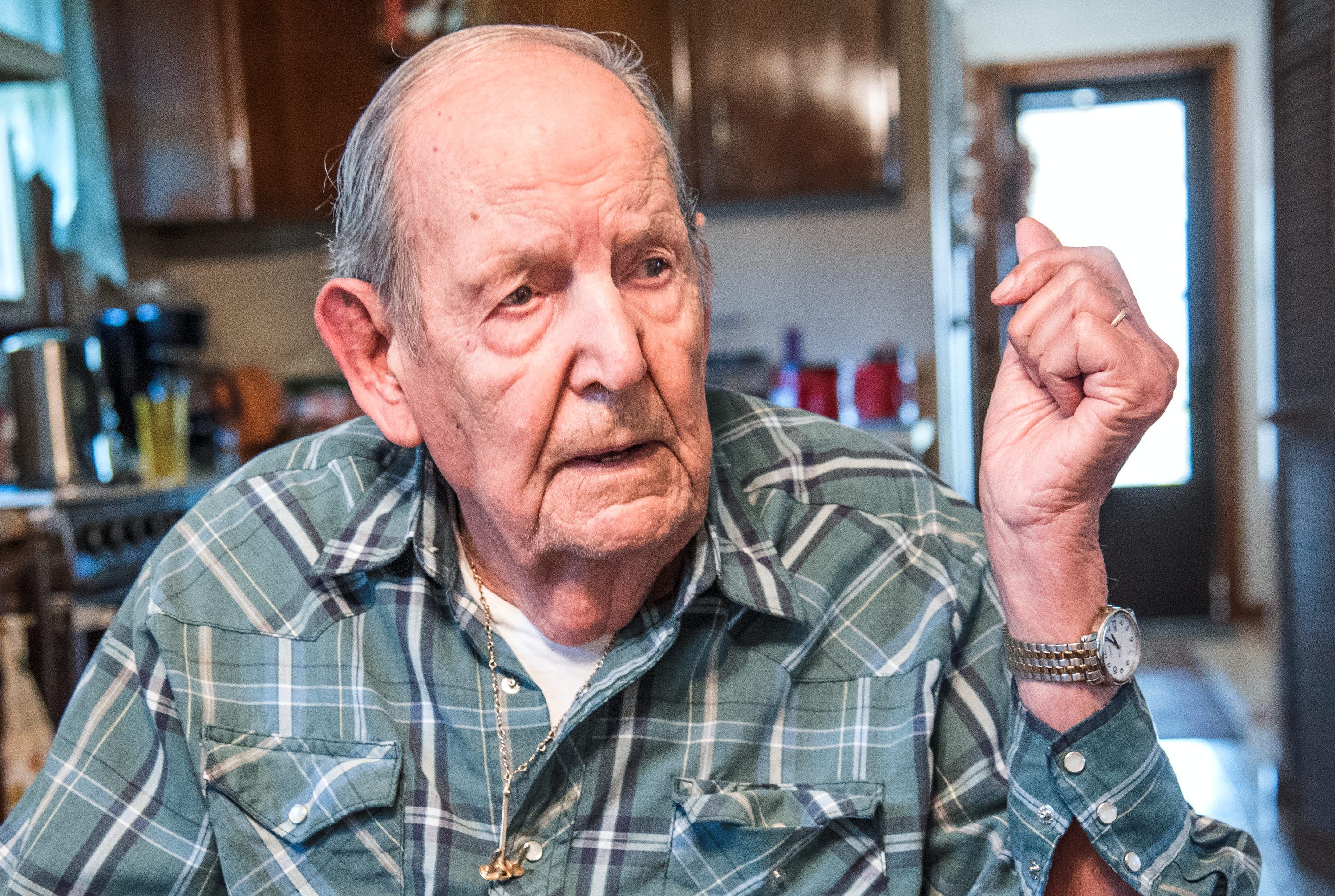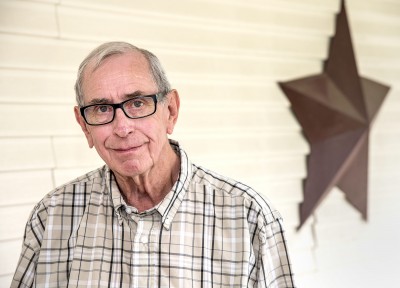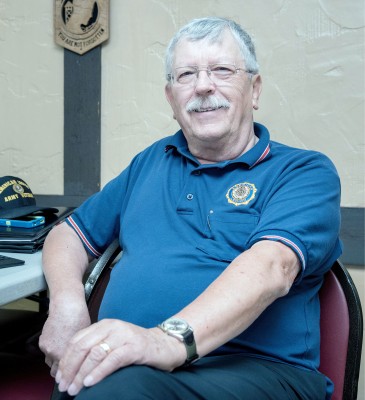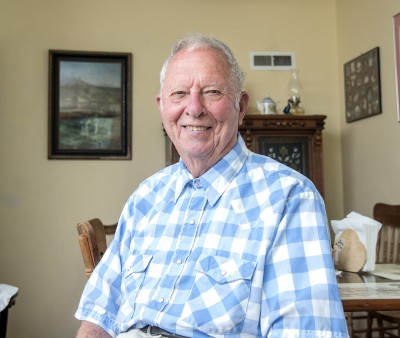Hubert Woolen
By Paul Wood

Photo By Robin Scholz/The News Gazette
CHAMPAIGN — In North Africa, Italy and Japan, Hubert Woolen served on the same destroyer, which crossed through the Panama Canal to serve in the latter part of World War II.
He was 17 and had moved to Champaign from near Shelbyville when the war started for America, with the Pearl Harbor attack.
“I needed my mother to sign the papers,” says Woolen, 92, who’d dropped out of high school and was driving a food truck.
“All my buddies went in,” he says.
In all, Woolen spent six years in the Navy, four of them aboard the USS Charles Hughes.
Two highlights: supporting the invasion of Anzio in Italy, and being just off the USS Missouri when Japan surrendered on that ship.
He did just about everything you can do in the Navy, including serving as a first class gunner’s mate, on shore patrol in San Francisco and working on a ship that supported seaplanes.
But the entire war, he was aboard the USS Charles Hughes, which started out guarding convoys against U-Boats.
In March 1943, he was at the Tobruk landings in Libya, fighting off “wolf packs” of Germans in North African waters before supporting the buildup for the invasion of Anzio in early 1944.
“A couple times, we emptied the 5-inch guns on Anzio,” he recalls. They’d fire one gun to prove accuracy, then all five “for effect.”
With a break to provide security for a convoy to Gibraltar, Woolen’s destroyer “would patrol off Anzio until May, providing vital fire support to the troops ashore,” a history of the USS Charles Hughes says: “More than one strong German counter-attack was broken up by the accurate fire of the destroyer. She would be reassigned in May, just before the successful breakout of the beachhead freed her for service elsewhere.”
Woolen recalls a German plane trying to bomb the ship, and a battle with German E-boats (similar to the American PT boats) that ended with German prisoners being taken in August 1944.
As the European war came to a close, the destroyer spend the last months of the Pacific war escorting convoys to Okinawa.
“We were tickled pink by the president’s excellent decision” to drop atomic bombs on Japan, effectively ending the war.
Just after his six years were up, he married Jeanne; they’ve been together for 70 years.
She worked in the war effort back home. They have four children, all daughters.
Woolen got his diploma in 1946, and became a painter, working for the University of Illinois for three decades.
“The service helped me a lot in my life,” he says now.
Do you know a veteran who could share a story about military service? Contact staff writer Paul Wood at pwood@news-gazette.com.
Read more stories from local veterans:
 Gary Massey
URBANA — Working in a small hospital in Pakistan, Gary Massey encountered soldiers with some diseases that most American …
Gary Massey
URBANA — Working in a small hospital in Pakistan, Gary Massey encountered soldiers with some diseases that most American …
 Rudi Laufhutte
CHAMPAIGN — Rudi Laufhutte survived a childhood in Germany where U.S. bombers leveled his town, then went on to serve pr …
Rudi Laufhutte
CHAMPAIGN — Rudi Laufhutte survived a childhood in Germany where U.S. bombers leveled his town, then went on to serve pr …
 Don Saupe
URBANA — Apparently, silence is golden in the Army. Don Saupe was on a troop ship in the Pacific when the end of World W …
Don Saupe
URBANA — Apparently, silence is golden in the Army. Don Saupe was on a troop ship in the Pacific when the end of World W …